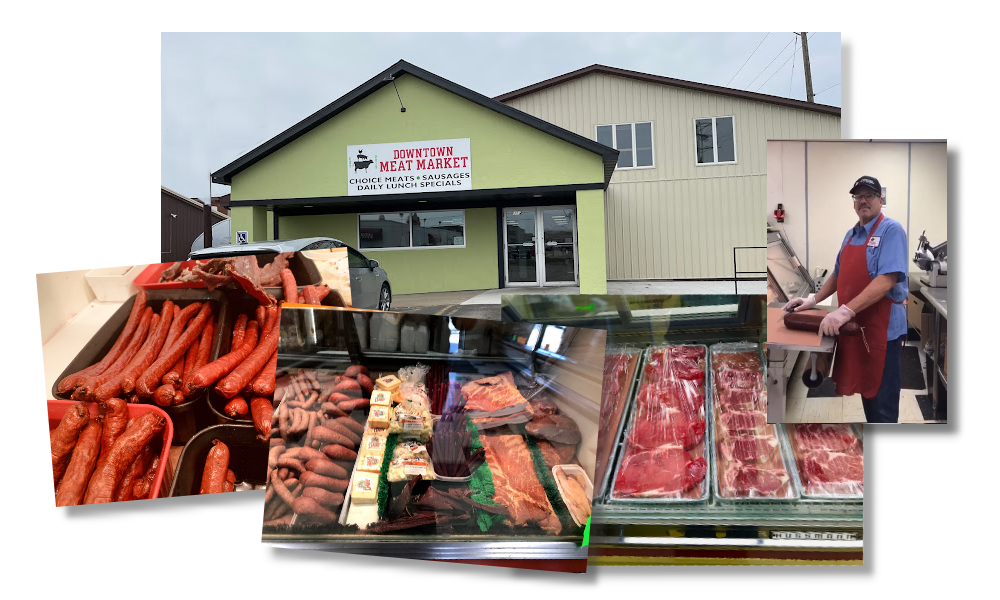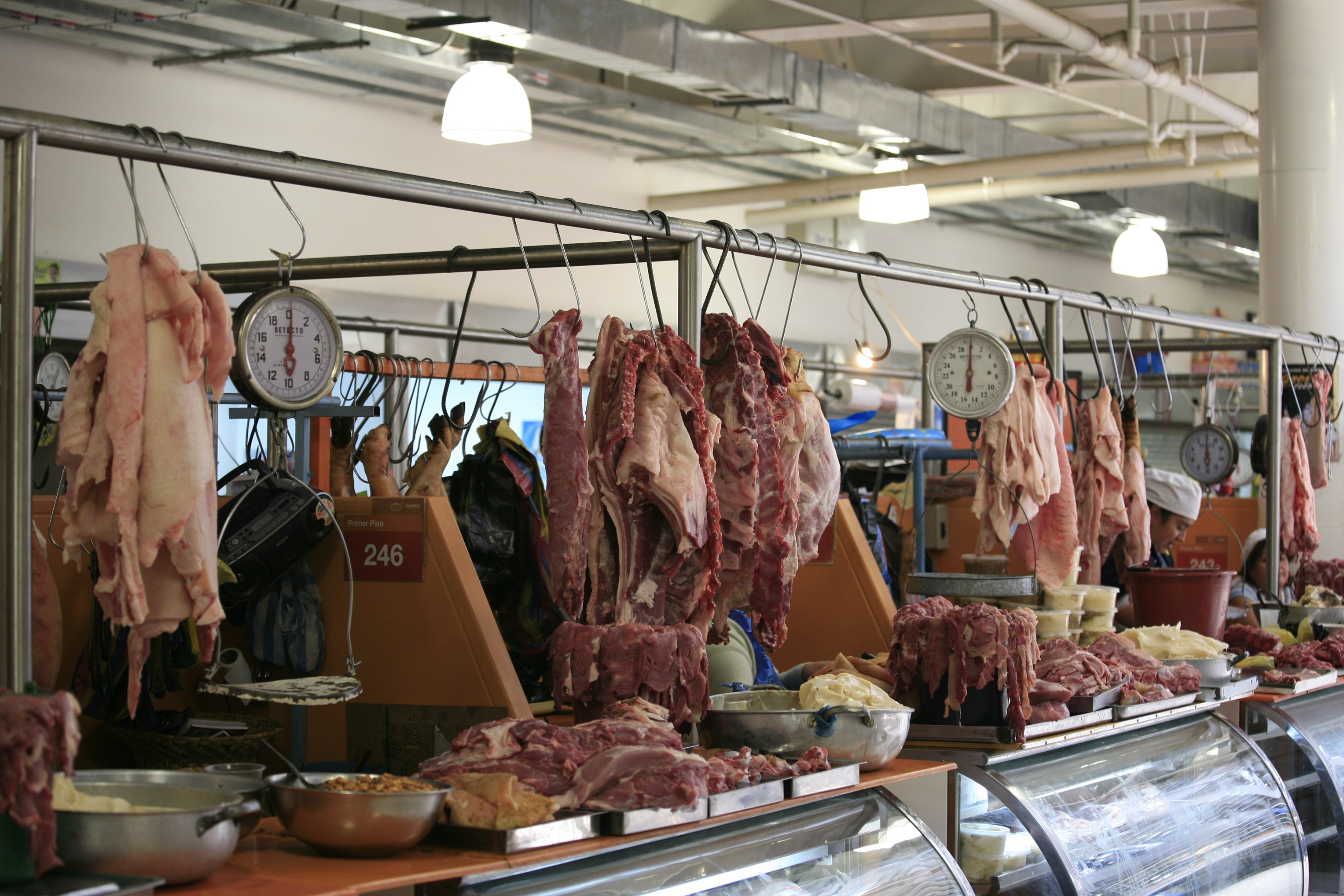Bagley Farms Meat Market Edwardsville IL: Your Go-To Destination for Neighborhood Meat Selection
Bagley Farms Meat Market Edwardsville IL: Your Go-To Destination for Neighborhood Meat Selection
Blog Article
Reveal the Art of the Butcher's Cut in a Modern Meat Market
In the ever-evolving landscape of modern meat markets, the butcher's cut has actually transcended its typical origins, merging old-time workmanship with contemporary practices. Today's butchers are not just cpus of meat; they are educated artisans that highlight sustainability and honest sourcing. Their know-how in choose and preparing cuts tailored to certain culinary needs uses an unequaled dining experience. Yet, what absolutely establishes the modern-day butcher apart is their capability to forge a much deeper connection between customers and the origins of their meat. Exactly how do these masters balance custom with development, and what ramifications does this have for the future of meat intake?
Advancement of Butchery Techniques
The evolution of butchery strategies reflects an abundant tapestry of development and adaptation driven by advancements in technology, changes in consumer demand, and a much deeper understanding of meat science. Historically, butchery was a craft passed down through generations, with approaches sharpened over centuries to make best use of yield and flavor. However, the industrial transformation ushered in automation, transforming conventional practices and enabling large handling.
The mid-20th century saw butchery strategies better fine-tuned by scientific insights right into muscle biology and meat aging, improving both inflammation and taste. Technologies like vacuum packaging and refrigeration extended item shelf-life, enabling butchers to branch out offerings and improve top quality control. This period additionally marked the rise of specific equipment, such as band saws and meat slicers, which raised precision and efficiency in meat handling.

Electronic systems currently help in tracking pet provenance and maximizing cuts to fulfill specific customer preferences. Furthermore, a revival in artisanal butchery has arised, mixing traditional skills with modern knowledge to provide to customers seeking ethical and lasting meat options.
Recognizing Meat Cuts
Understanding the ins and outs of meat cuts is essential for both butchers and customers looking for high quality and worth. Each cut comes from a different part of the pet, passing on special flavors, appearances, and food preparation approaches - bagley farms meat market edwardsville il. Mastery of these differences not just boosts cooking experiences but also maximizes the utility of each carcass. For butchers, precise cuts reflect skill and regard for the craft, making sure very little waste and ideal yield.

Comprehending muscular tissue make-up is important; muscular tissues used more often by the animal have a tendency to be harder and are best matched for slow-moving food preparation techniques, while less-used muscular tissues, like those discovered in the loin, are much more tender and ideal for cooking or roasting. Familiarity with these distinctions empowers customers to make enlightened selections, boosting their cooking ventures.
Selecting Top Quality Meat
Selecting the appropriate meat involves even more than just selecting an aesthetically attractive item from the screen. The art of picking high quality meat calls for a discerning eye and understanding of certain characteristics that symbolize freshness and quality.
Secondly, think about the marbling, which refers to the white streaks of fat within the muscle mass. Correct marbling is a key indication of tenderness and taste, as it thaws throughout food preparation, improving the meat's juiciness. Keep in mind, higher marbling frequently associates with superior quality cuts, such as USDA Prime.
Appearance is an additional critical element; meat ought to really feel firm to the touch, not slimy or extremely soft. In addition, bear in mind the aroma. Fresh meat needs to have a tidy, neutral scent, without any sour or off-putting odors.
Pairing Cuts With Cooking Techniques

Conversely, harder cuts like brisket and chuck roast are rich in collagen, which breaks down into gelatin when cooked slowly. These cuts are optimal for braising or sluggish roasting, permitting the meat to soften over time and create deep, complex tastes. Cuts such as brief ribs and pork shoulder fare well with slow-cooking methods, where extended cooking times change their durable structures right into delicious recipes.
Lamb shanks and oxtail, which call for long term food preparation to tenderize, are excellent you can try here prospects for stewing or slow simmering. These approaches coax out rich, hearty tastes while preserving wetness. By recognizing the one-of-a-kind features of each cut, cooks and home cooks alike can raise their cooking creations, guaranteeing each dish is both pleasing and memorable.
The Butcher's Role Today
Navigating the progressing landscape of the contemporary meat market, the butcher's function today expands past mere prep work of cuts. Contemporary butchers are cooking craftsmens, instructors, and supporters for sustainable techniques.
In enhancement to crafting accurate cuts, butchers currently engage directly with consumers, offering cooking advice and tailoring options to suit private demands and preferences. Their proficiency in meat aging, marbling, and flavor accounts empowers customers to make informed decisions, enhancing their culinary experiences. This tailored solution exemplifies the butcher's evolving role as a trusted advisor in the cooking area.
Furthermore, butchers are pivotal in reducing waste, utilizing whole pets to develop diverse products such as sausages and stocks. This detailed strategy not only values the animal yet also straightens with contemporary sustainability objectives. By doing this, click to read more the modern butcher personifies both tradition and development, adjusting to an ever-changing market while preserving the artistry and integrity of their craft.
Final Thought
Proficiency in understanding varied meat cuts and quality indicators equips butchers to offer informed recommendations, straightening certain cuts with ideal food preparation approaches. By recognizing historical practices while embracing modern needs, the butcher's role stays crucial in today's innovative meat market.
Report this page